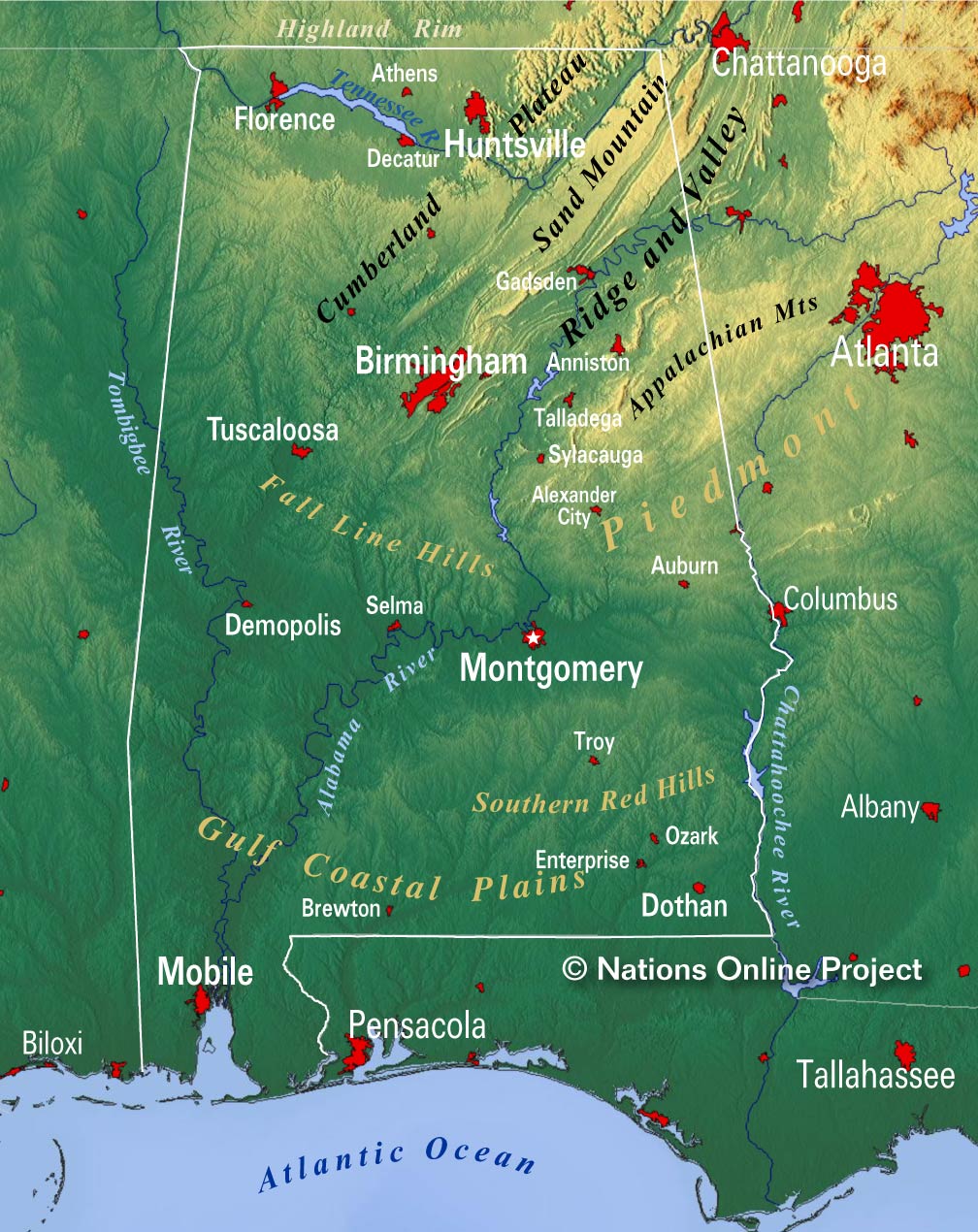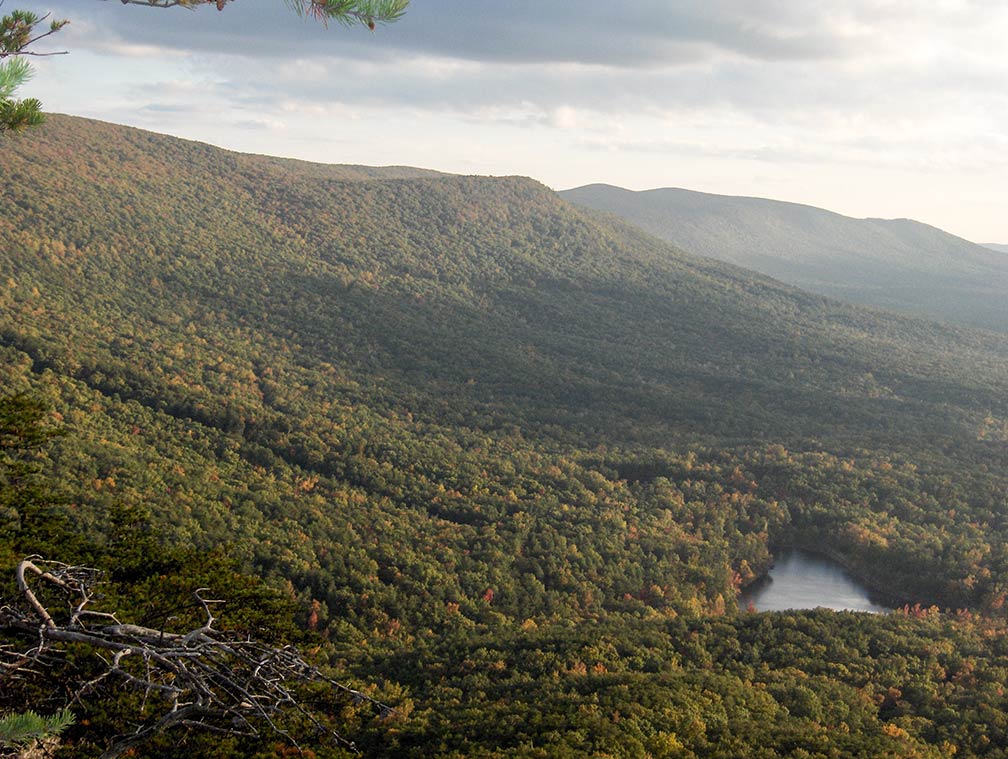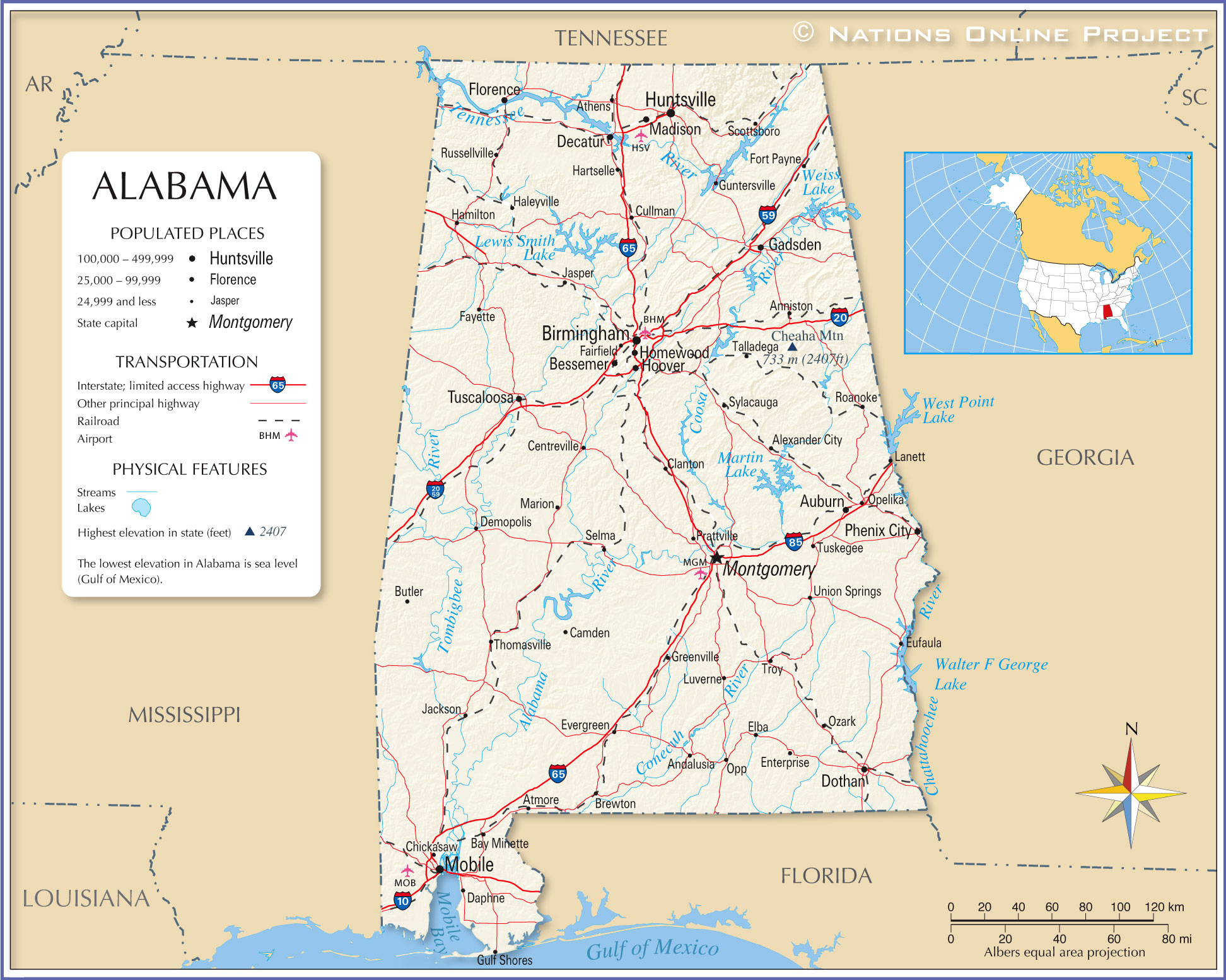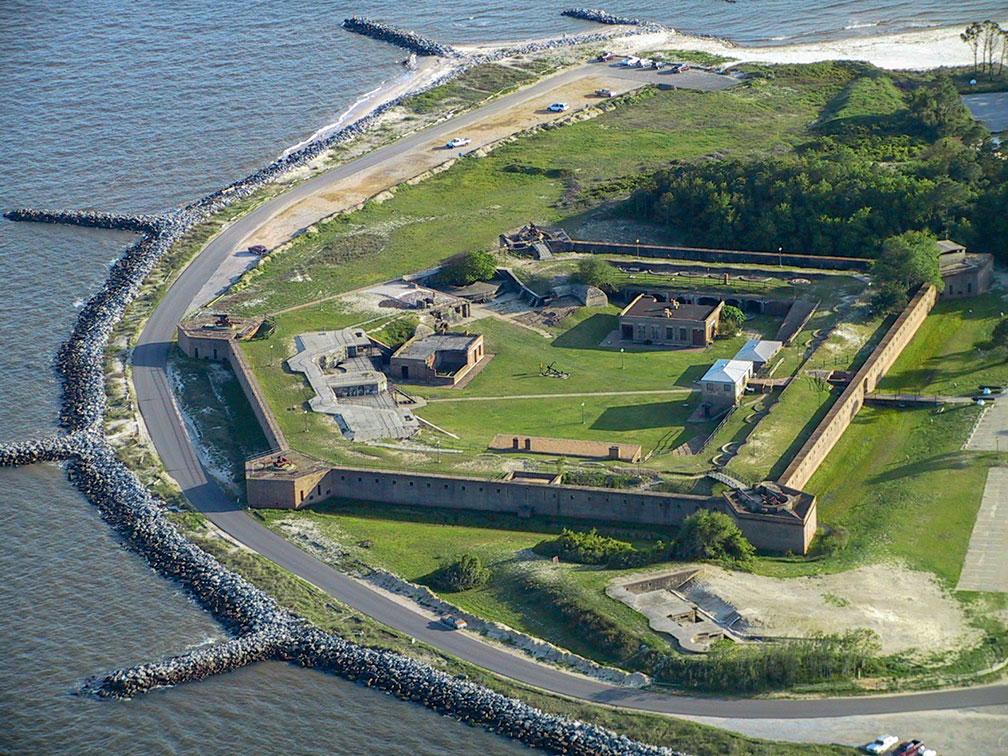More about Alabama State
Some Geography
 Topographic Regions Map of Alabama. Click on the map to enlarge.
Topographic Regions Map of Alabama. Click on the map to enlarge.
Alabama's landscape is geographically diverse, encompassing coastal plains, rolling hills, and forested areas. Along its southern Gulf Coast, there are sandy beaches and marshy wetlands. Inland, the terrain rises into gently rolling hills, and the northern part of the state is characterized by the foothills of the Appalachian Mountains.
These diverse landscapes offer a range of outdoor opportunities, from water activities along the coast to hiking and exploration in the wooded hills.
Area
The state occupies an
area of 135,767 km² (52,420 sq mi),
[1] making it somewhat larger than
Greece (131,957 km²). Compared with other US states by area, Alabama is six times larger than
New Jersey, but it would fit into
Texas about five times. Nearly 70% of Alabama's landscape is covered by forest.
Alabama's Landscape
Alabama's landscape offers five major physiographic regions; all areas are sections of the far greater geographic regions of the Eastern and Southeastern United States:
I. The
Highland Rim section in the northwest and north-central Alabama is the southern portion of the Appalachian Highlands.
II. To the southeast of the Highland Rim rises the dissected tableland of the
Cumberland Plateau (aka Allegheny Plateau), the southern part of the Appalachian Plateau.
III. Further southeast stretches out the belt of the Appalachian
Ridge and Valley, a region with ridges along valleys in between, like the Red Mountain ridge that separates the Jones Valley from the Shades Valley south of Birmingham (AL).
 Cheaha Lake at base of Cheaha Mountain, highest point in Alabama at 735 m (2,413 ft).
Cheaha Lake at base of Cheaha Mountain, highest point in Alabama at 735 m (2,413 ft).
Image: Amann09
.
Between the Ridge and Valley area and the Atlantic Seaboard fall line dominates the
Piedmont Upland Alabama's landscape, a triangular shaped area with rolling hills in the central eastern part of the state.
V. The
Coastal Plain province of Alabama is the largest geographic region (about 60%) in the state. It is a mostly flat region, but here and there, it offers some change in the landscape, rounded and eroded hills, cuestas, and Flatwoods; and the are the floodplains of the Alabama and Black Warrior rivers.
[2]
Rivers
Principal rivers in Alabama are the
Coosa River, which becomes the
Alabama River, which is then fed by its tributaries, the Tallapoosa, and the Cahaba rivers.
When the
Tombigbee River joins the Alabama, the river changes its name again to
Mobile River.
The
Tennessee River, the largest tributary of the Ohio River, crosses Alabama in north.
The
Chattahoochee River forms a section of Alabama's border with Georgia.
The
Black Warrior River empties the largest drainage area that lies entirely within Alabama.







